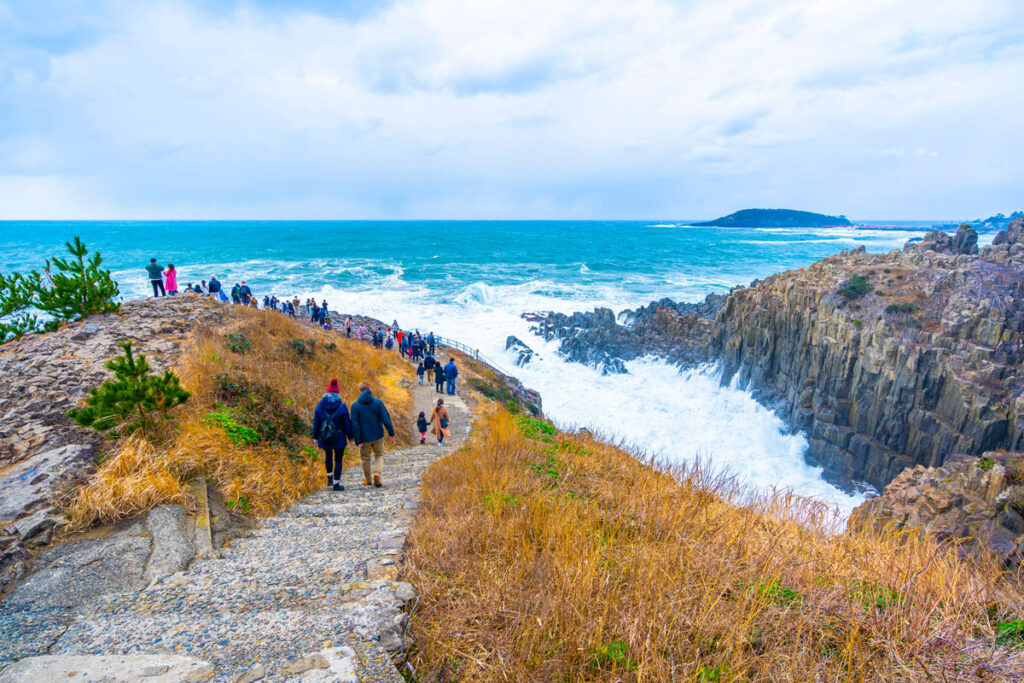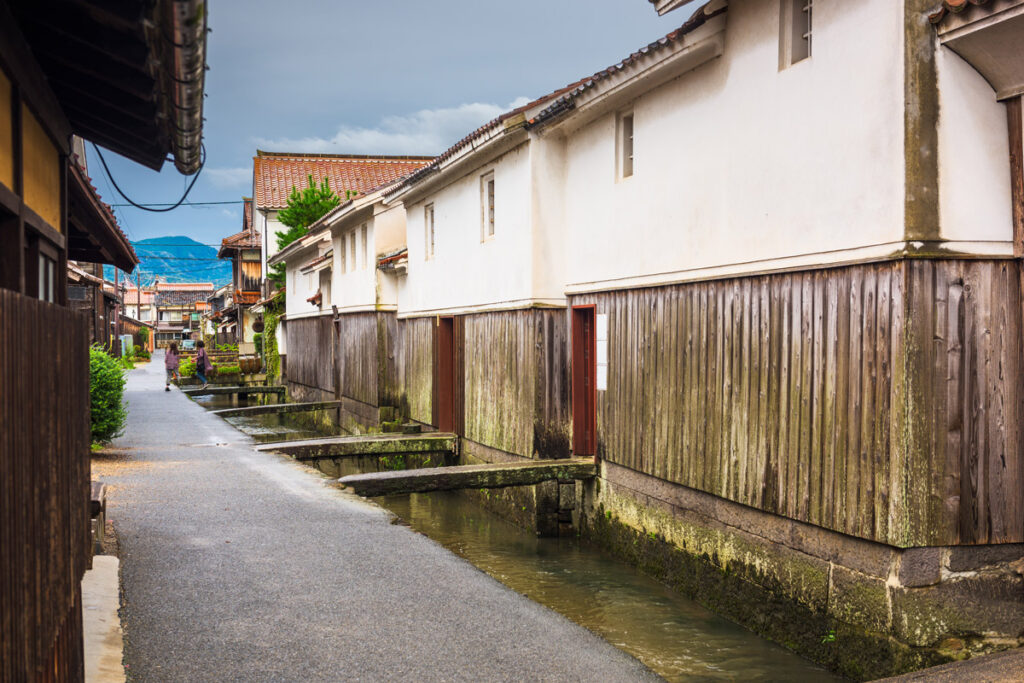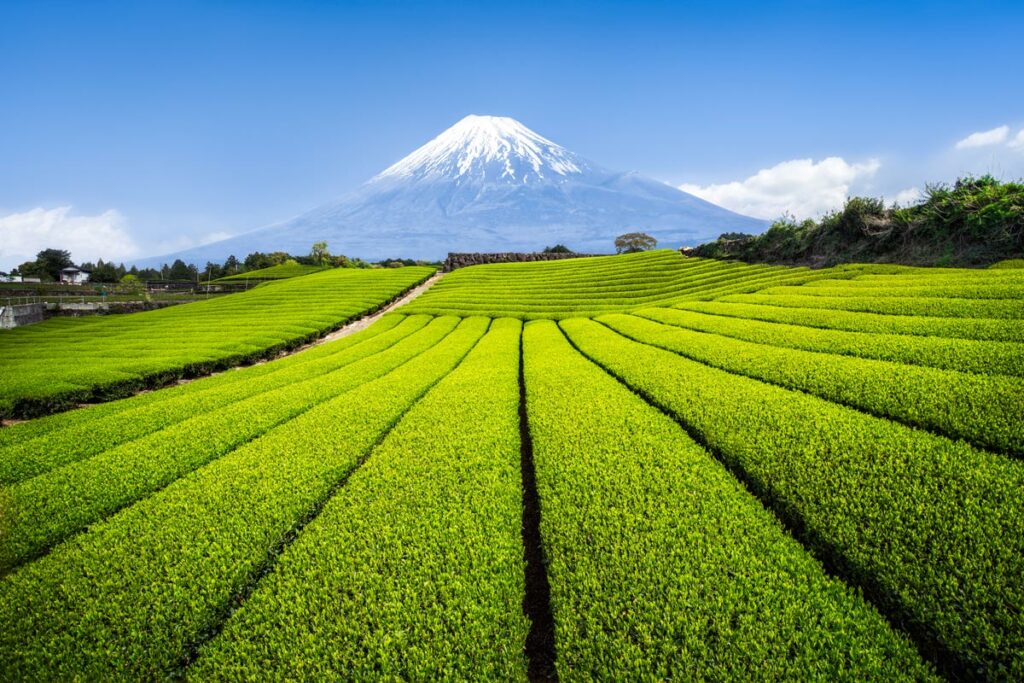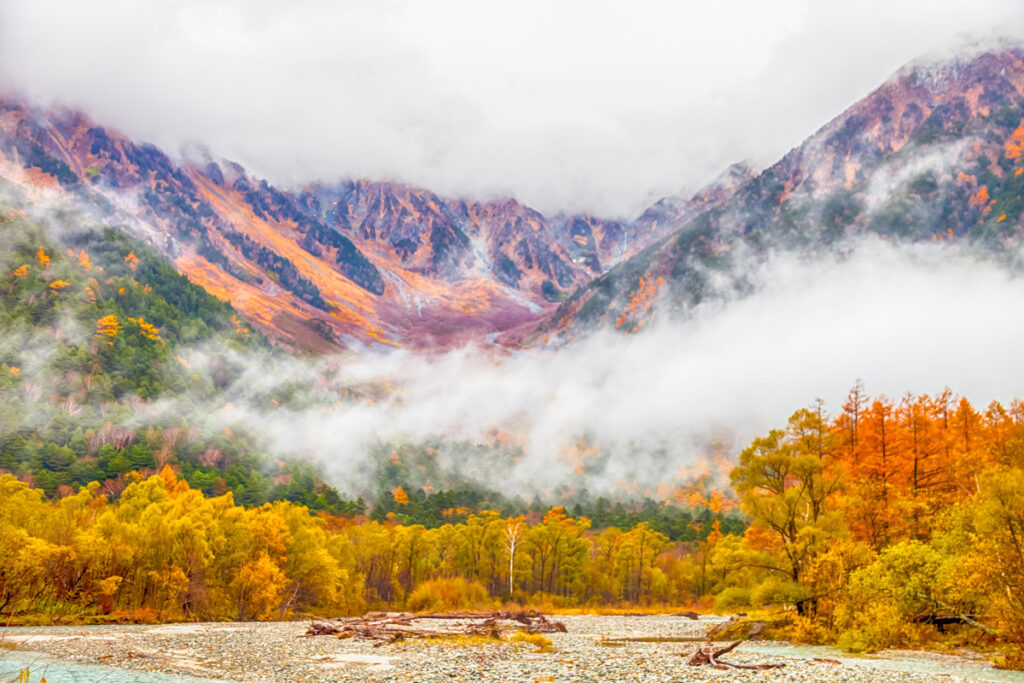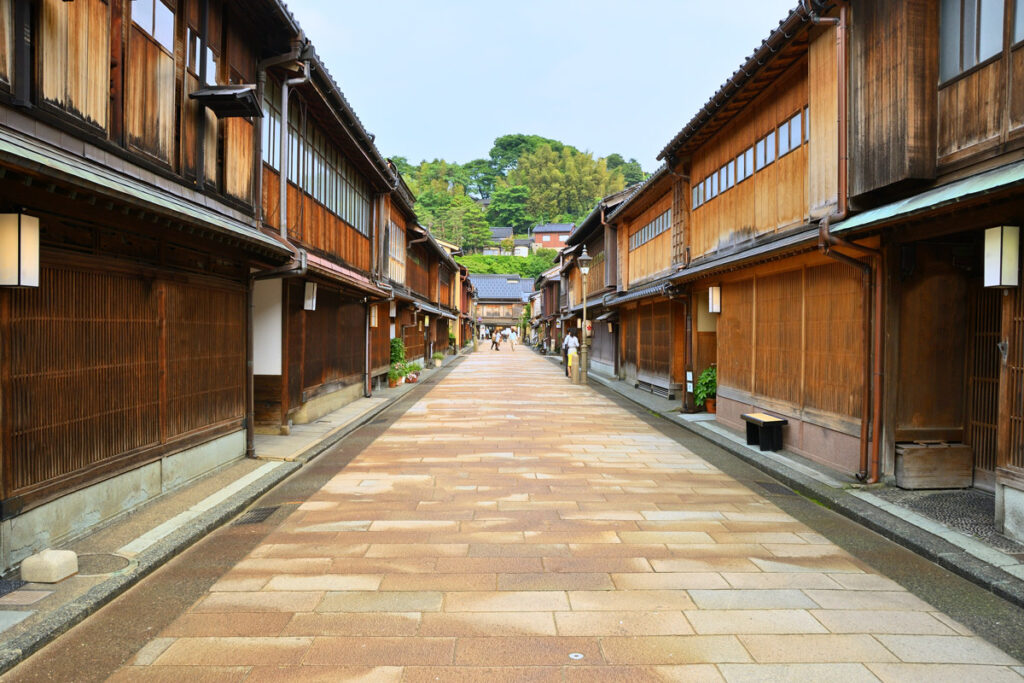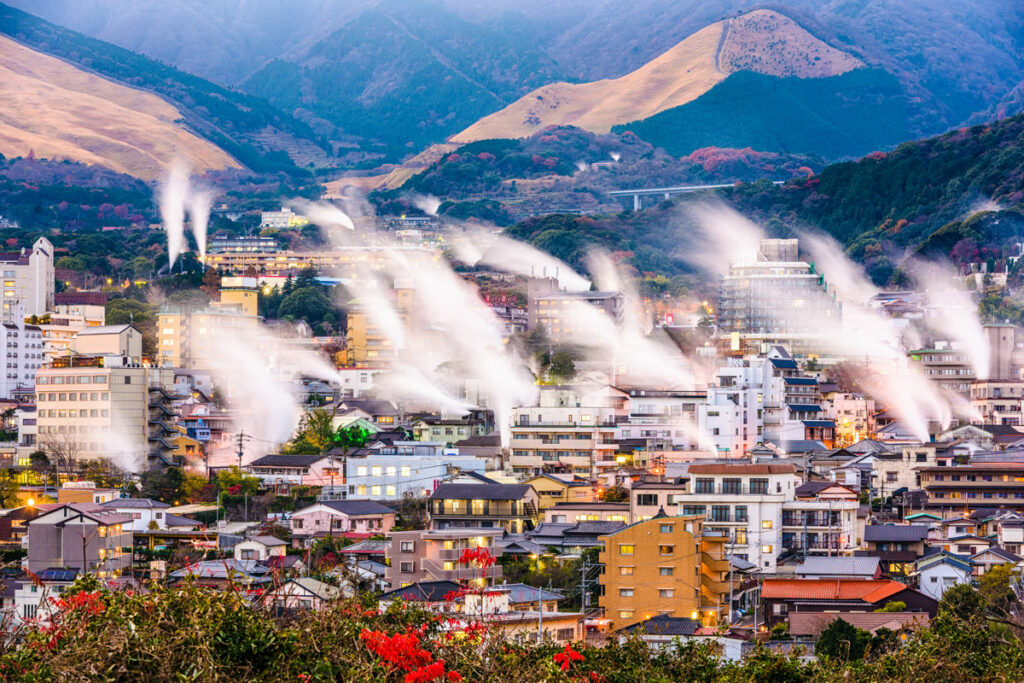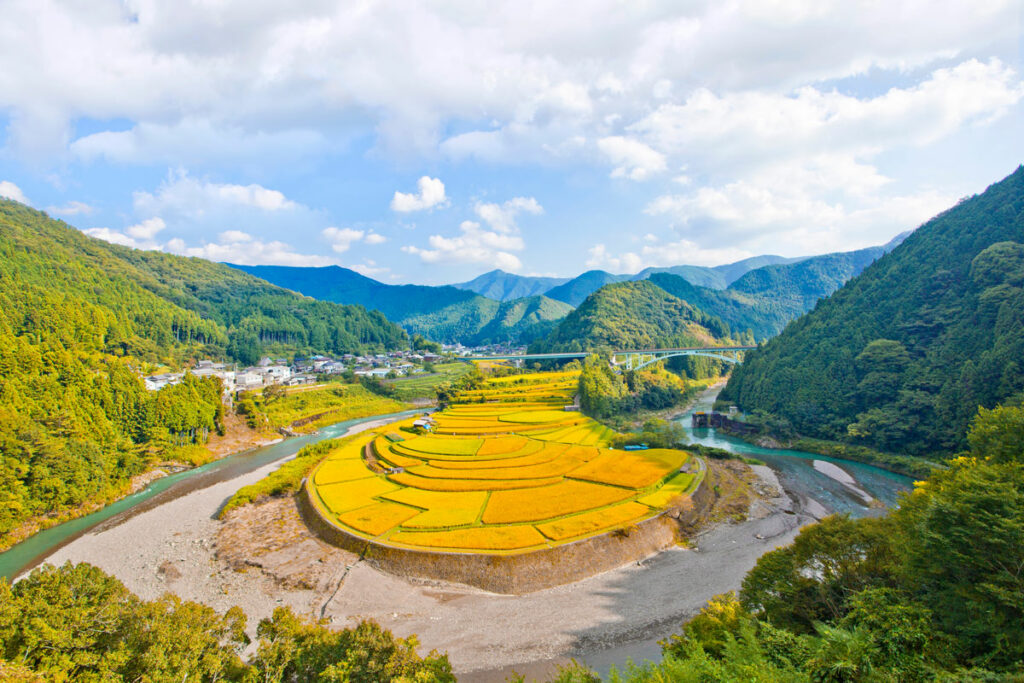Welcome to Saga Travel Guide! If you’re setting your sights on Japan’s breathtaking Kyushu region, then you’re in for a treat. Saga is a beautiful prefecture in Kyushu, Japan, with a rich history and culture. There are many things to see and do in Saga, from visiting historical sites to exploring natural wonders. From serene hot springs to historic castles, there’s no shortage of adventures to be had. In this guide, we’ll dive into the 12 Top-Rated Things to do in Saga. So, whether you’re a history buff, a nature enthusiast, or someone just looking for a unique getaway, Saga has something special in store for you. Let’s embark on this journey together and discover the wonders of this captivating region!
1. Takeo Onsen
A renowned hot spring destination, Takeo Onsen offers a rejuvenating experience for visitors. The therapeutic waters and serene ambiance make it a must-visit spot in Saga.

Takeo Onsen: Nestled in the heart of Saga Prefecture, this hot spring destination has been a beacon for those seeking solace and rejuvenation for centuries. The town has over 200 springs, and the waters are said to have healing properties. Takeo Onsen is a popular spot for tourists and locals alike, who come to relax and rejuvenate in the thermal waters. With its origins tracing back over a thousand years, Takeo Onsen stands as one of Japan’s most historic and cherished thermal baths.
The hot springs in Takeo Onsen are alkaline, which means that they have a high pH level. This makes the water soft and gentle on the skin, and it is said to be beneficial for people with skin conditions such as eczema and psoriasis. The water is also said to be good for relieving stress and fatigue.
But it’s not just the waters that draw visitors. The ambiance of Takeo Onsen is something to be experienced. Traditional Japanese architecture, with its wooden structures and ornate carvings, complements the natural surroundings. In addition to the hot springs, Takeo Onsen is also home to a number of other attractions, such as the Takeo Onsen Sakura-mon, a red-lacquered gate that is a National Important Cultural Property. There are also a number of ryokan (traditional Japanese inns) in Takeo Onsen, where guests can stay and enjoy the traditional Japanese hot spring experience.
If you are looking for a relaxing and rejuvenating vacation, Takeo Onsen is a great place to visit. The town has something to offer everyone, from couples and families to solo travelers.
Official Website: Takeo Onsen
Address: 7427-1 Takeocho Oaza Takeo, Takeo, Saga 843-0022
Reviews Visit: TripAdvisor
2. Yutoku Inari Shrine
One of the grandest Inari shrines in Japan, Yutoku Inari Shrine is a spectacle of vibrant red torii gates and stunning architecture.
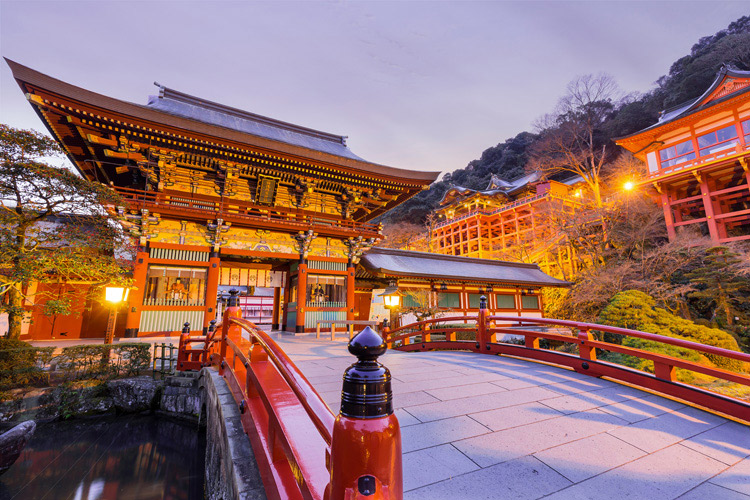
Yutoku Inari Shrine is one of the grandest Inari shrines in Japan. It is located in Kashima City, Saga Prefecture, and is dedicated to the god of rice, Inari. The shrine is famous for its thousands of vermillion torii gates, which line the path leading up to the main shrine. This magnificent shrine is a testament to Japan’s deep-rooted spiritual traditions and architectural prowess. As one of the three major Inari shrines in the country, Yutoku Inari Shrine holds a special place in the hearts of both locals and tourists.
The torii gates are a symbol of Inari, and the number of gates at Yutoku Inari Shrine is said to represent the shrine’s great power. The shrine’s architecture is a marvel in itself. Elevated on wooden stilts, the main hall seems to float above a valley, offering panoramic views of the surrounding lush greenery. The gates are also a popular spot for photography, and the shrine is a must-visit for any fan of Japanese culture.
In addition to the torii gates, Yutoku Inari Shrine also features a number of other impressive structures, including the Gohonden (main shrine), the Romon gate, and the Okunoin shrine. The shrine is also surrounded by beautiful gardens, which are a great place to relax and enjoy the natural beauty of the area.
If you are visiting Saga Prefecture, Yutoku Inari Shrine is a must-see. The shrine is a spectacular sight, and it is a great place to learn about Japanese culture and religion.
Official Website: Yutoku Inari Shrine
Address: 1855 Furueda, Kashima, Saga 849-1321
Reviews Visit: TripAdvisor
3. Karatsu Castle
Overlooking the sea, Karatsu Castle stands as a testament to Japan’s rich history and architectural prowess.
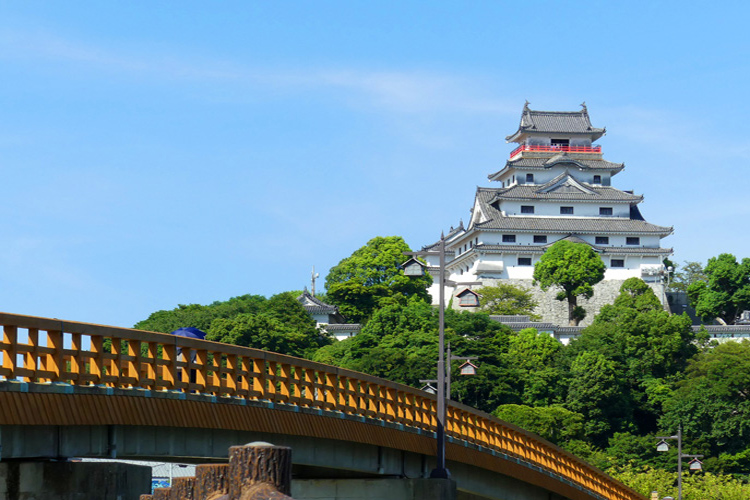
Karatsu Castle is also known as “Maizuru Castle,” which means “dancing crane castle” and it is a seaside castle located in Karatsu City, Saga Prefecture, Japan. It is one of the most well-preserved castles in Japan, and it stands as a testament to the country’s rich history and architectural prowess. This castle Perched majestically on a hill in Saga Prefecture, this iconic structure offers a panoramic view of the azure sea and the cityscape below. A symbol of Japan’s feudal era, Karatsu Castle is a blend of military fortification and artistic elegance.
The castle was built in 1608 by Terasawa Hirotaka, a retainer of Toyotomi Hideyoshi. It is a five-story castle with a complex layout, and it is surrounded by a moat and a stone wall. The castle is also known for its beautiful gardens, which are a popular spot for tourists and locals alike. In the 1960s, Karatsu Castle was restored to its former glory. Today, it is a popular tourist destination, and it is a great place to learn about Japanese history and culture.
The castle’s architecture is a marvel, with its multi-tiered wooden structure, ornate carvings, and traditional tiled roofs. Each detail, from the defensive turrets to the beautifully adorned interiors, speaks volumes about Japan’s rich history and cultural heritage.
For travelers, a visit to Karatsu Castle is not just about admiring its architectural beauty. It’s an opportunity to step back in time, to walk the corridors of history, and to immerse oneself in a bygone era of honor, valor, and artistry.
Official Website: Kuratsu Castle
Address: 8-1 Higashijonai, Karatsu, Saga 847-0016
Reviews Visit: TripAdvisor
4. Arita Porcelain Park
A tribute to the region’s porcelain heritage, this park showcases exquisite ceramic pieces and offers insights into the art of pottery.
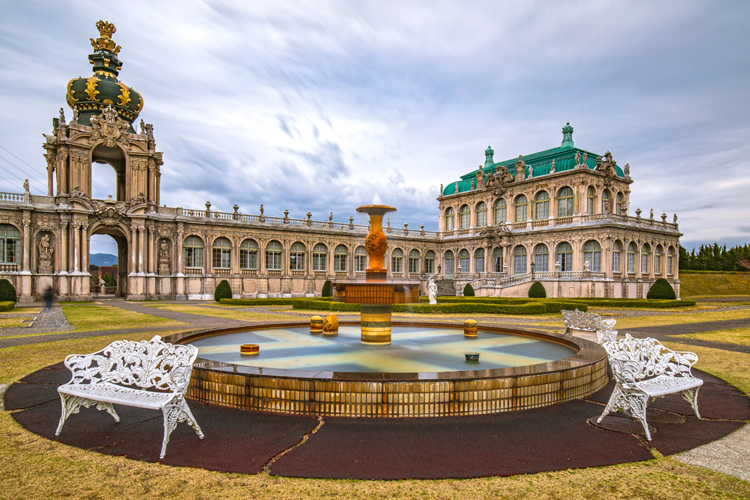
Arita Porcelain Park is a tribute to the region’s porcelain heritage. It is located in Arita City, Saga Prefecture, Japan, which is known as the “Porcelain Capital of Japan.” The park showcases exquisite ceramic pieces from over the centuries, and offers insights into the art of pottery. A visit to Arita Porcelain Park is akin to stepping into a world where art, history, and nature converge. The park is home to a vast collection of exquisite ceramic pieces, each telling a story of craftsmanship, dedication, and artistic vision. From intricate vases to ornate plates, the porcelain on display is a testament to the skills and passion of the artisans who have called Arita home for centuries.
The park is divided into three areas: the History Museum, the Ceramic Art Museum, and the Porcelain Village. The History Museum tells the story of Arita porcelain, from its origins in the 17th century to its current status as a global export. The Ceramic Art Museum exhibits a variety of porcelain pieces, from traditional Japanese ceramics to contemporary art. The Porcelain Village is a living museum, where visitors can see potters at work and purchase souvenirs.
Arita Porcelain Park is a must-visit for anyone interested in porcelain or Japanese history and culture. It is a beautiful and informative place to learn about the art of pottery and to appreciate the beauty of Arita porcelain.
Official Website: Arita Porcelain Park
Address: Otsu-340-28 Toya, Arita, Nishimatsuura District, Saga 844-0014
Reviews Visit: TripAdvisor
5. Yoshinogari Historical Park
Step back in time at this archaeological site, which provides a glimpse into the Yayoi period of ancient Japan.
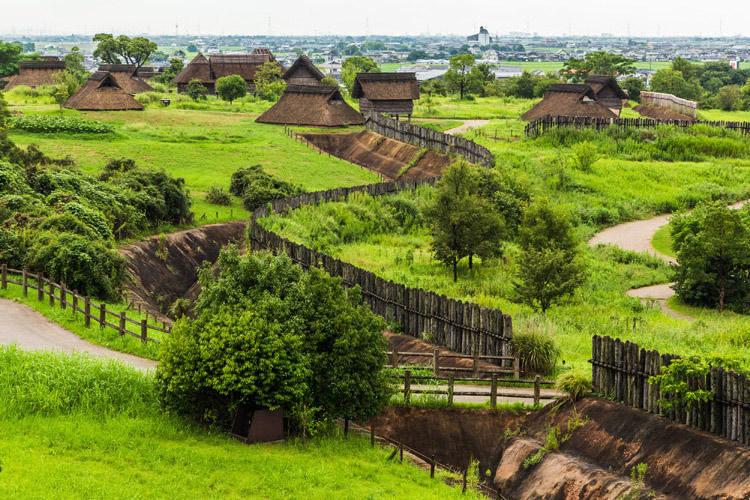
Yoshinogari Historical Park is an archaeological site that provides a glimpse into the Yayoi period of ancient Japan (300 BC to 300 AD). The park is located in Saga Prefecture, Japan, and it is home to the ruins of a large settlement that was once home to over 10,000 people. As one wanders through Yoshinogari Historical Park, the whispers of ancient Japan come alive, painting vivid pictures of life thousands of years ago.
The settlement was built on a hilltop and was surrounded by moats and walls. It had a complex drainage system and a sophisticated water management system. The houses were made of wood and thatch, and they were arranged in rows. The park is dotted with meticulously reconstructed dwellings, watchtowers, and burial mounds, each offering insights into the daily lives, rituals, and customs of the Yayoi people. The attention to detail in these reconstructions is astounding, from the thatched roofs to the wooden palisades, ensuring an authentic experience for visitors.
The settlement was a major center of trade and commerce during the Yayoi period. It was also a center of religious activity, and there are a number of shrines and temples located in the park. Guided tours, led by knowledgeable guides, delve deeper into the significance of the site, the discoveries made during excavations, and the importance of the Yayoi period in shaping Japan’s cultural and historical landscape.
Yoshinogari Historical Park is a UNESCO World Heritage Site and it is one of the most important archaeological sites in Japan. It is a fascinating place to learn about the history and culture of ancient Japan.
Official Website: Yoshinogari Historical Park
Address: 1843 Tade, Yoshinogari, Kanzaki District, Saga 842-0035
Reviews Visit: TripAdvisor
6. Okawachiyama Village
Often referred to as the “Village of Secret Kilns”, Okawachiyama is a haven for pottery enthusiasts.
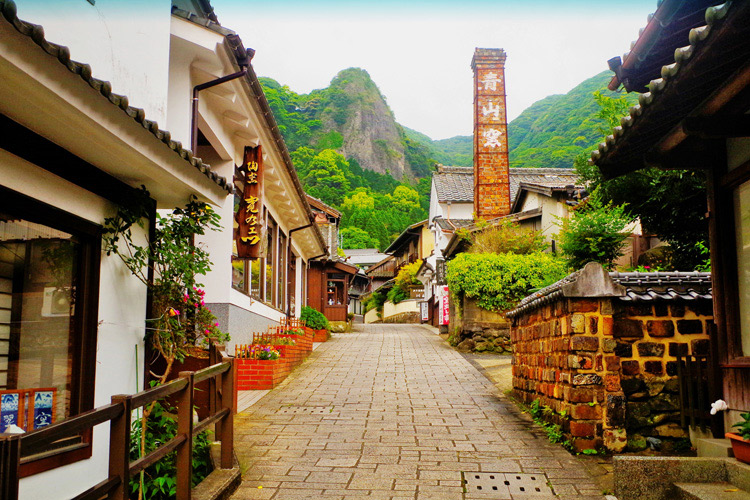
Okawachiyama Village is a small village in Saga Prefecture, Japan, that is often referred to as the “Village of Secret Kilns.” The village is home to a number of pottery workshops and stores, and it is a popular destination for pottery enthusiasts from all over the world. Known as the “Village of Secret Kilns”, Okawachiyama Village stands as a testament to Japan’s deep-rooted ceramic traditions.
The history of pottery in Okawachiyama Village dates back to the 17th century, when the Nabeshima clan, the feudal lords of Saga, established a number of kilns in the village. The kilns were used to produce porcelain for the Nabeshima family and for export to Europe. Today, as you meander through the village’s narrow lanes, you’re greeted by charming workshops and studios where artisans meticulously craft exquisite pottery pieces. The air is thick with creativity, and every corner seems to tell a story of passion, dedication, and craftsmanship.
Today, Okawachiyama Village is still a major center for pottery production. The village is home to a number of traditional pottery workshops, where visitors can see how pottery is made the old-fashioned way. There are also a number of modern pottery studios in the village, where visitors can learn how to make their own pottery.
In addition to pottery workshops and stores, Okawachiyama Village also has a number of other attractions, including a traditional Japanese teahouse and a museum dedicated to the history of pottery in the village.
If you are interested in pottery, Okawachiyama Village is a must-visit destination. The village is a living museum of pottery, and it is a great place to learn about the history and artistry of this ancient craft.
Official Website: Okawachiyama Village
Address: Otsu-1848 Okawachicho, Imari, Saga 848-0025
Reviews Visit: TripAdvisor
7. Saga International Balloon Fiesta
A vibrant celebration of hot air balloons, this fiesta attracts enthusiasts from around the world.
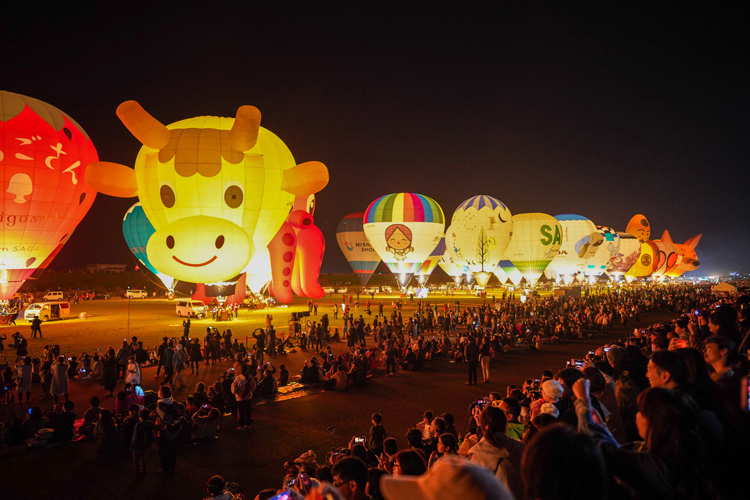
The Saga International Balloon Fiesta is a vibrant celebration of hot air balloons that attracts enthusiasts from around the world. The festival is held every year in November from 1 to 6 in Saga City, Saga Prefecture, Japan. The Saga International Balloon Fiesta is not just an event; it’s a spectacle, a celebration of flight and freedom that draws balloonists and spectators from all corners of the globe.
The horizon is dotted with balloons of all shapes, sizes, and designs, from traditional globes to whimsical characters. As the sun rises, the balloons take flight, casting their vibrant reflections on the serene waters below. The festival features a variety of events, including hot air balloon rides, balloon races, and a fireworks display. There are also food stalls and souvenir shops at the festival.
The highlight of the festival is the night glow, where the balloons are illuminated in the darkness. This is a truly magical sight that is sure to leave a lasting impression. The Saga International Balloon Fiesta is a great place to see hot air balloons up close and to learn about the sport. It is also a fun and family-friendly event that is sure to be enjoyed by all.
Official Website: Saga International Balloon Fiesta
Reviews Visit: TripAdvisor
8. Nanatsugama Caves
Carved by the waves, these sea caves offer a unique natural attraction along the Saga coastline.

The Nanatsugama Caves are a natural wonder of the Saga coastline, located in Karatsu City, Saga Prefecture, Japan. The name Nanatsugama means “seven cauldrons,” and this is a reference to the seven caves that are carved into the cliff face. The best time to visit the caves is during the spring or fall, when the weather is mild.
The Nanatsugama Caves, shaped by the relentless force of the Genkai Sea waves, stand as a testament to the power and beauty of the natural world. The waves have eroded the soft rock, creating these dramatic caves. The largest cave is 3 meters wide and 110 meters deep. These sea caves, numbering seven in total, have been carved out of the basalt cliffs over millennia. The rhythmic dance of the waves against the rock has resulted in a series of chambers, each with its own unique shape and character.
The Nanatsugama Caves are a popular tourist destination. Visitors can take a boat tour of the caves, or they can hike to the top of the cliff and look down at the caves from above.
The caves are also a popular spot for fishing and scuba diving. The clear waters of the Genkai Sea make it easy to see the fish and coral reefs that live in the caves.
Website: Nanatsugama Caves
Address: 3671-9 Yakataishi, Karatsu, Saga 847-0135
Revies visit: TripAdvisor
9. Mifuneyama Rakuen Garden
A sprawling garden that boasts seasonal flowers, serene ponds, and picturesque landscapes.
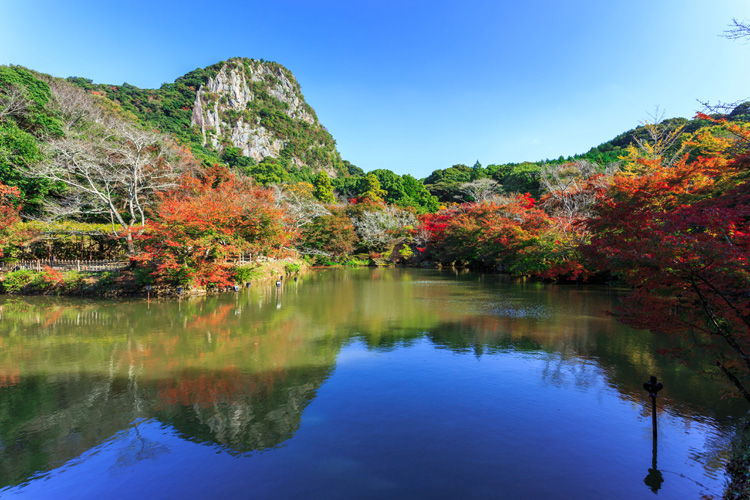
Mifuneyama Rakuen Garden is a sprawling garden located in Saga Prefecture, Japan. The garden is known for its seasonal flowers, serene ponds, and picturesque landscapes. Mifuneyama Rakuen Garden is not just a garden; it’s a tapestry of nature’s finest elements woven together to create a tranquil sanctuary.
The garden was created in the 17th century by the daimyo Nabeshima Mitsushige. The garden was originally designed as a place for the daimyo to relax and enjoy the natural beauty of the area. Spanning over 150,000 square meters, the garden is a symphony of colors and textures. As seasons change, so does the garden’s palette. Spring brings a burst of cherry blossoms, painting the landscape in soft pinks.
The garden is divided into three sections: the upper garden, the middle garden, and the lower garden. The upper garden is the most scenic part of the garden. It is home to a variety of flowers, including cherry blossoms, plum blossoms, and lotus flowers. The middle garden is more formal, and it is home to a number of ponds and waterfalls. The lower garden is the most secluded part of the garden. It is home to a bamboo forest and a teahouse.
Mifuneyama Rakuen Garden is a popular tourist destination, a visit to Mifuneyama Rakuen Garden is a journey for the senses, an invitation to pause, reflect, and lose oneself in the sheer beauty of nature.
Official Website: Mifuneyama Rakuen Garden
Address: 4100 Takeocho Oaza Takeo, Takeo, Saga 843-0022
Reviews Visit: TripAdvisor
10. Arita and Imari
Two towns synonymous with porcelain production, they offer a deep dive into the world of ceramics.
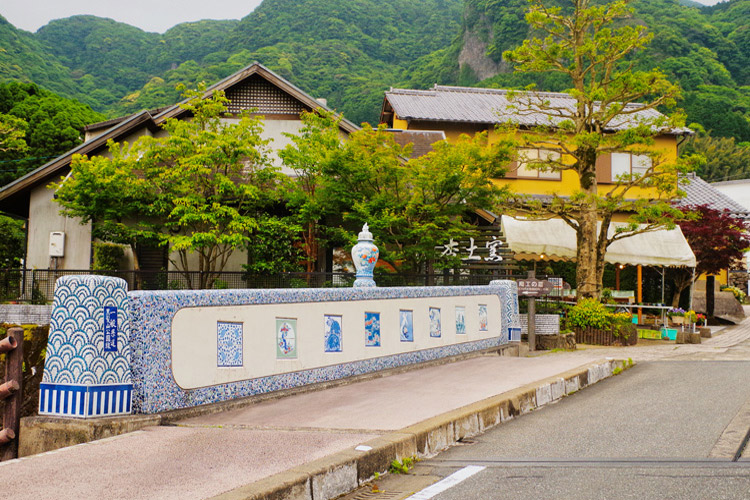
Arita, often regarded as the birthplace of Japanese porcelain, boasts a history that spans over 400 years. Walking through its streets, one can feel the pulse of centuries-old traditions. Artisans, young and old, can be seen meticulously shaping, painting, and firing their creations, each piece a testament to their dedication and skill.
Arita and Imari are two towns in Saga Prefecture, Japan that are synonymous with porcelain production. Arita is known for its white porcelain, while Imari is known for its colorful glazed pottery. Arita and Imari are not just towns; they are epicenters of ceramic artistry, where clay and fire unite to create masterpieces that have graced homes and palaces worldwide.
The history of porcelain production in Arita dates back to the 17th century. The town was founded by Korean potters who were brought to Japan by the feudal lord Nabeshima. The potters brought with them their knowledge of porcelain making, and Arita soon became a major center for porcelain production. Imari porcelain was first produced in the 17th century. The pottery is characterized by its colorful glazes, which are often inspired by Chinese porcelain. Imari porcelain became popular all over the world, and it was exported to Europe and the Americas.
Today, Arita and Imari are still major centers for porcelain production. There are many pottery workshops and museums in the towns, where visitors can learn about the history and techniques of porcelain making.
If you are interested in porcelain, Arita and Imari are a must-visit destination. The towns offer a unique opportunity to learn about the history and culture of porcelain, and to see some of the most beautiful porcelain in the world.
11. Karatsu City Museum of History and Folklore
Delve into the rich history of Karatsu, from its early days to its modern evolution.
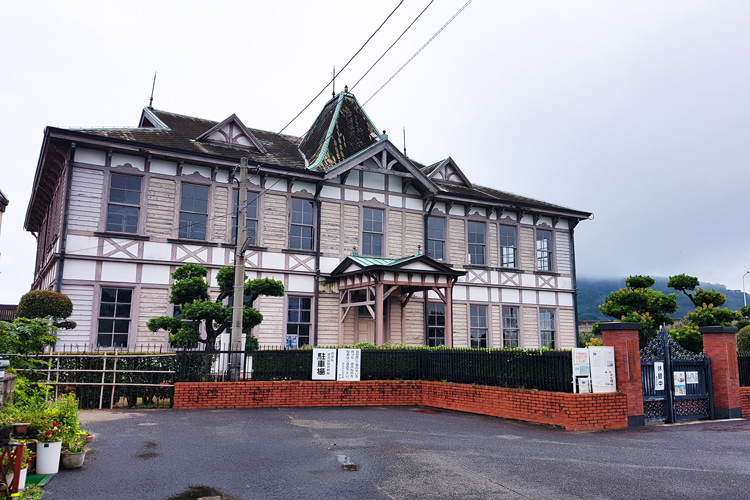
The Karatsu City Museum of History is a great place to learn about the rich history of Karatsu, from its early days as a fishing village to its modern evolution as a major industrial city. The Karatsu City Museum of History is not just a building filled with artifacts; it’s a chronicle of a city’s soul, its triumphs, challenges, and evolution.
The museum is located in the heart of Karatsu City, and it is housed in a beautifully restored traditional Japanese building. The museum has a number of exhibits that explore the history of Karatsu, including its geography, economy, culture, and people.
One of the most popular exhibits at the museum is the “Karatsu Castle Model.” The model is a detailed replica of Karatsu Castle, which was built in the early 17th century. The castle was destroyed in the 19th century, but the model gives visitors a glimpse of what it once looked like.
The museum also has exhibits on the Karatsu pottery industry, which is one of the most famous in Japan. The exhibits showcase the history of pottery making in Karatsu, as well as the different types of pottery that are produced in the city.
If you are interested in learning about the history of Karatsu, the Karatsu City Museum of History is a great place to start.
Website: Karatsu City Museum
Address: 7181 Kaigandori, Karatsu, Saga 847-0873
12. Kiyomizu Waterfall
A tranquil spot, the Kiyomizu Waterfall is the perfect place for nature lovers and those seeking a moment of peace.
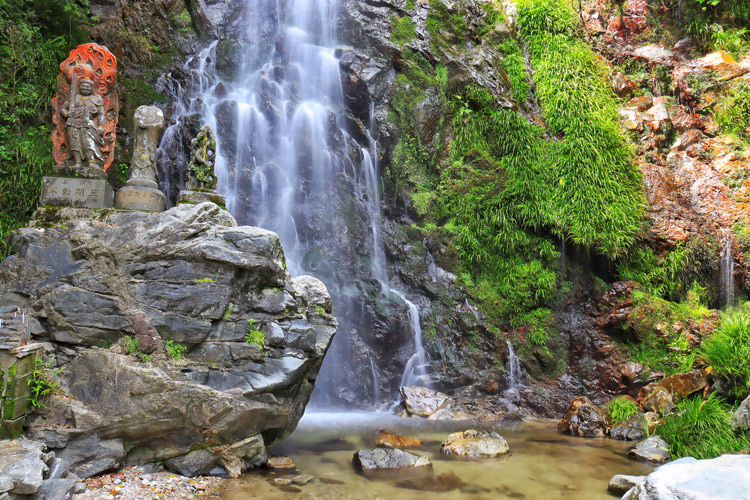
The Kiyomizu Waterfall is a tranquil spot in the mountains of Saga Prefecture, Japan. The waterfall is 75 meters high and 13 meters wide, and it is a popular destination for nature lovers and those seeking a moment of peace. The Kiyomizu Waterfall isn’t just a cascade of water; it’s a symphony of nature, where every droplet plays a note of tranquility.
As you approach the waterfall, the gentle sound of water cascading over rocks beckons you closer. The sight of the pristine water, shimmering under the sun’s rays and tumbling gracefully into a crystal-clear pool below, is nothing short of mesmerizing. The waterfall is located in the Kiyomizu-dera Temple complex, which is a UNESCO World Heritage Site. The temple is dedicated to the god of water, and the waterfall is said to have healing powers.
The waterfall is best visited in the spring or fall, when the weather is mild. The waterfall is also a popular spot for hiking and picnicking. For nature lovers, Kiyomizu Waterfall offers ample opportunities for photography, with its ever-changing vistas across different seasons.
If you are looking for a place to relax and enjoy the beauty of nature, the Kiyomizu Waterfall is a great option. The waterfall is a peaceful and serene place, and it is sure to leave you feeling refreshed and rejuvenated.
Website: Kiyomizu Waterfall
Address: Ogimachi Matsuo, Ogi, Saga 845-0004
Where to Stay in Saga for Sightseeing
Whether you’re looking for luxury accommodations, mid-range options, or budget-friendly hotels, Saga has something to suit every traveler’s needs. Here are some top picks:
Luxury Stay:
Karatsu Seaside Hotel: This 5-star hotel is located in Karatsu City, and it offers stunning views of the Genkai Sea. Overlooking the azure waters, this hotel offers a blend of luxury and tranquility. After a day of sightseeing, unwind in the hotel’s opulent rooms and savor gourmet meals with a view. The hotel has a number of amenities, including a spa, a fitness center, and a rooftop restaurant. It is located just a stone’s throw away from the historic Karatsu Castle, guests can easily explore one of Saga’s most iconic landmarks.
Oncri : This ryokan is located in the Okawachiyama Village and close proximity to the Yutoku Inari Shrine, and it is a great place to experience traditional Japanese hospitality. The ryokan has a number of traditional Japanese rooms, and it offers a variety of traditional Japanese experiences, such as a tea ceremony and a kabuki performance. With tatami rooms, onsen baths, and traditional kaiseki meals, it’s a luxurious retreat into Japan’s past. It is located near the Okawachiyama Village and the Arita Porcelain Park.
The Hamilton Ureshino: This 5-star hotel is located in Ureshino Onsen, and it is a great place to relax and rejuvenate in the natural hot springs. A short drive from Mifuneyama Rakuen Garden, guests can easily immerse themselves in the natural beauty of Saga. The hotel has a number of amenities, including a spa, a fitness center, world-class service and a variety of restaurants. It is located near the Ureshino Onsen and the Yoshinogari Historical Park.
Mid-Range Stay:
Hotel Route Inn Saga Ekimae: This hotel is located in Saga City, and it is a great choice for those who are looking for a convenient location. The hotel is close to the JR Saga Station, and it is also within walking distance of many of the city’s attractions. Its central location makes it an ideal base for exploring the nearby Saga International Balloon Fiesta and other attractions.
Fairfield by Marriott Saga Ureshino Onsen: Experience the perfect blend of comfort and culture. Situated near the renowned Ureshino Onsen, guests can indulge in therapeutic hot spring baths after a day of sightseeing at places like Okawachiyama Village. This hotel is located in Ureshino Onsen, and it is a great choice for those who want to experience the natural hot springs.
Budget Stay:
APA Hotel Saga Ekimae Chuo: This hotel is located in Saga City, and it is a great choice for those who are looking for a budget-friendly option. The hotel is close to the JR Saga Station, and it also has a number of amenities, such as a free breakfast buffet and a coin-operated laundry. It’s a convenient base for exploring attractions like the Nanatsugama Caves.
Comfort Hotel Saga: This hotel is located in Saga City, and it is a great choice for those who are looking for a comfortable and affordable stay. The hotel is close to the JR Saga Station, and it also has a number of amenities, such as a free breakfast buffet and a 24-hour front desk, guests can easily access attractions like the Karatsu City Museum of History.
Frequently Asked Questions (FAQs)
What are the best places to visit in Saga?
The best places to visit in Saga depend on your interests. If you are interested in history and culture, you can visit Yutoku Inari Shrine, Karatsu Castle, and Arita Porcelain Park. If you are interested in nature, you can visit Yoshinogari Historical Park, Nanatsugama Caves, and Mifuneyama Rakuen Garden. If you are interested in relaxation, you can visit Takeo Onsen or Ureshino Onsen.
When is the best time to visit Saga?
The best time to visit Saga depends on what you want to do. If you want to avoid the crowds, the best time to visit is during the off-season, which is from November to March. If you want to experience the cherry blossom season, you can visit in April or May. If you want to experience the fall foliage season, you can visit in October or November.
Are there any unique cultural experiences to explore in Saga?
Absolutely! Saga is renowned for its porcelain production, traditional festivals, and historic towns. Our guide on the 12 Top-Rated Things to do in Saga delves into these cultural experiences, ensuring visitors get a deep understanding of the region’s traditions.
Why should I visit the Kyushu region, specifically Saga Prefecture?
The Kyushu region is known for its scenic beauty, cultural landmarks, and unique experiences. Saga Prefecture, in particular, offers a blend of history, nature, and artistry, making it a must-visit destination for those looking to explore the authentic side of Japa
What are the must-try foods in Saga?
There are many must-try foods in Saga. Some of the most popular dishes include Karatsu ramen, Saga beef, and Arita udon.
